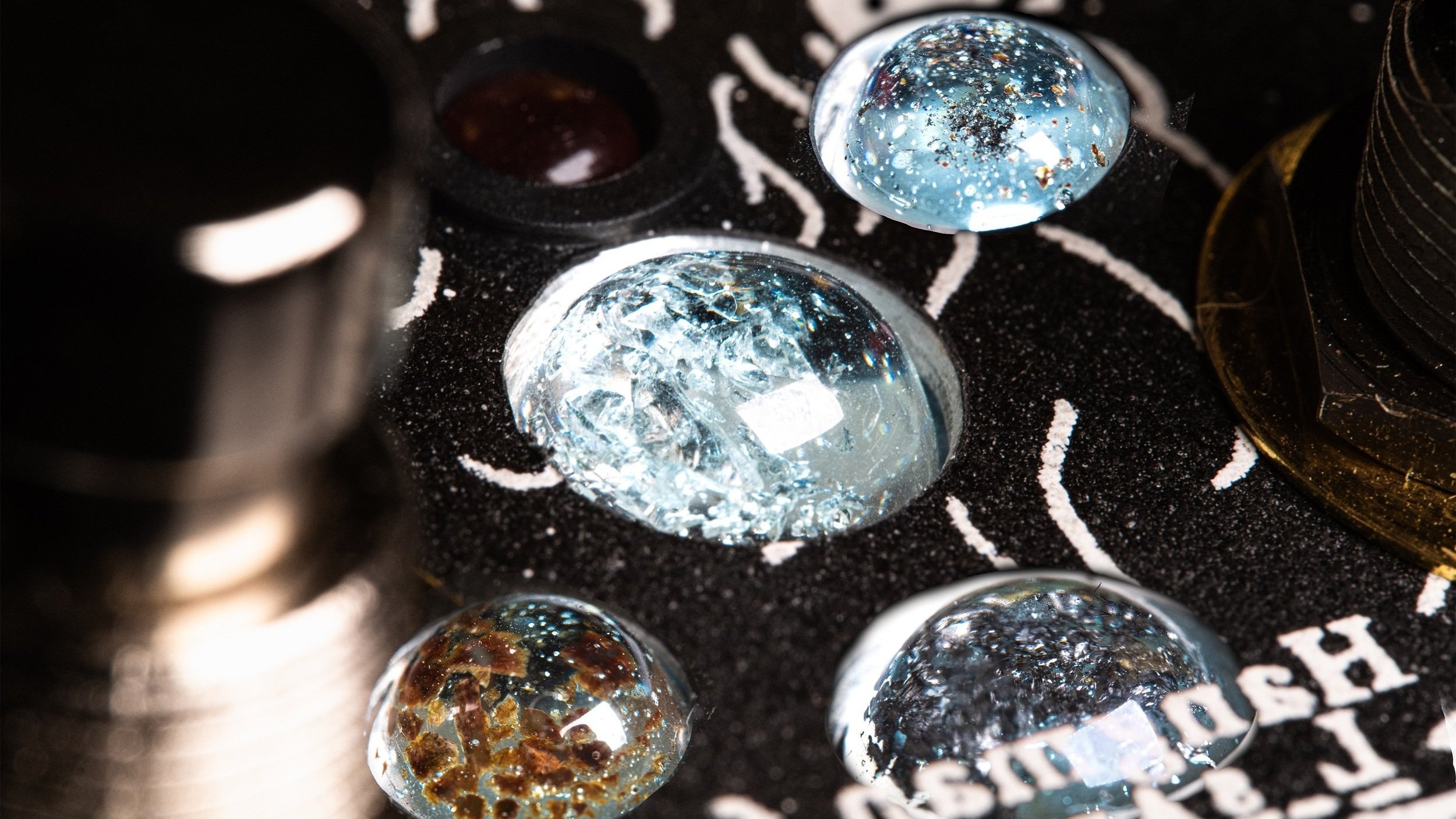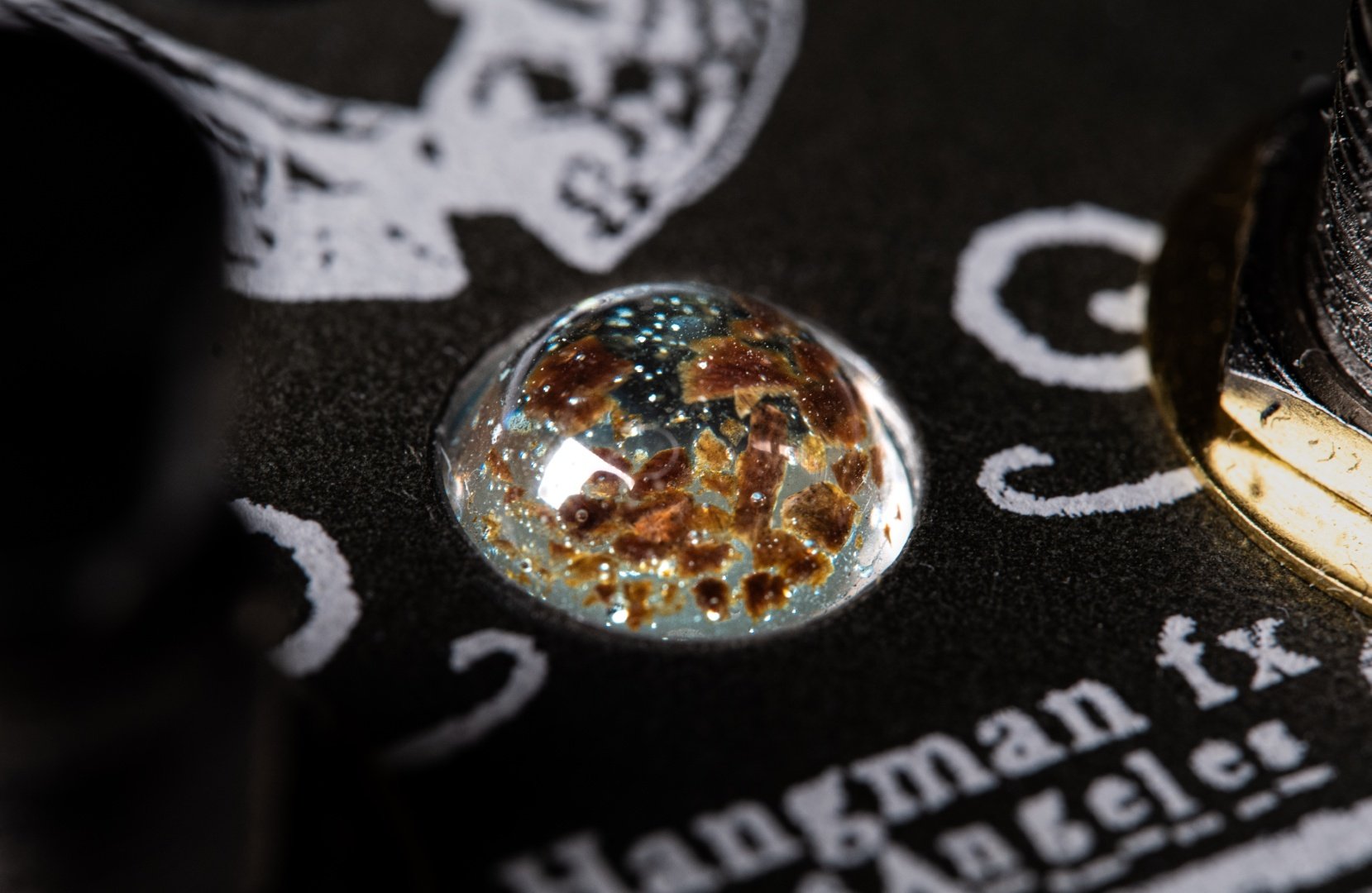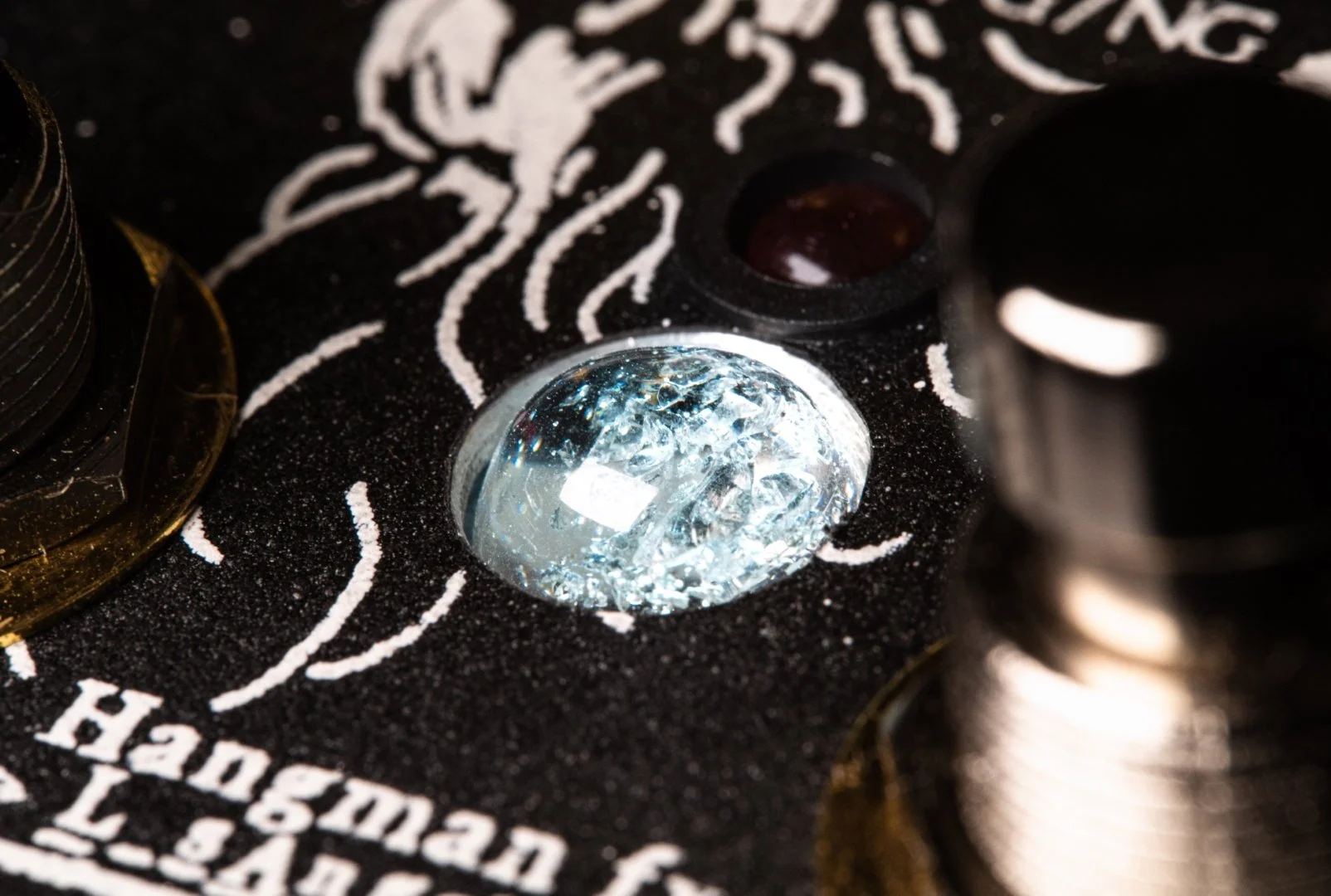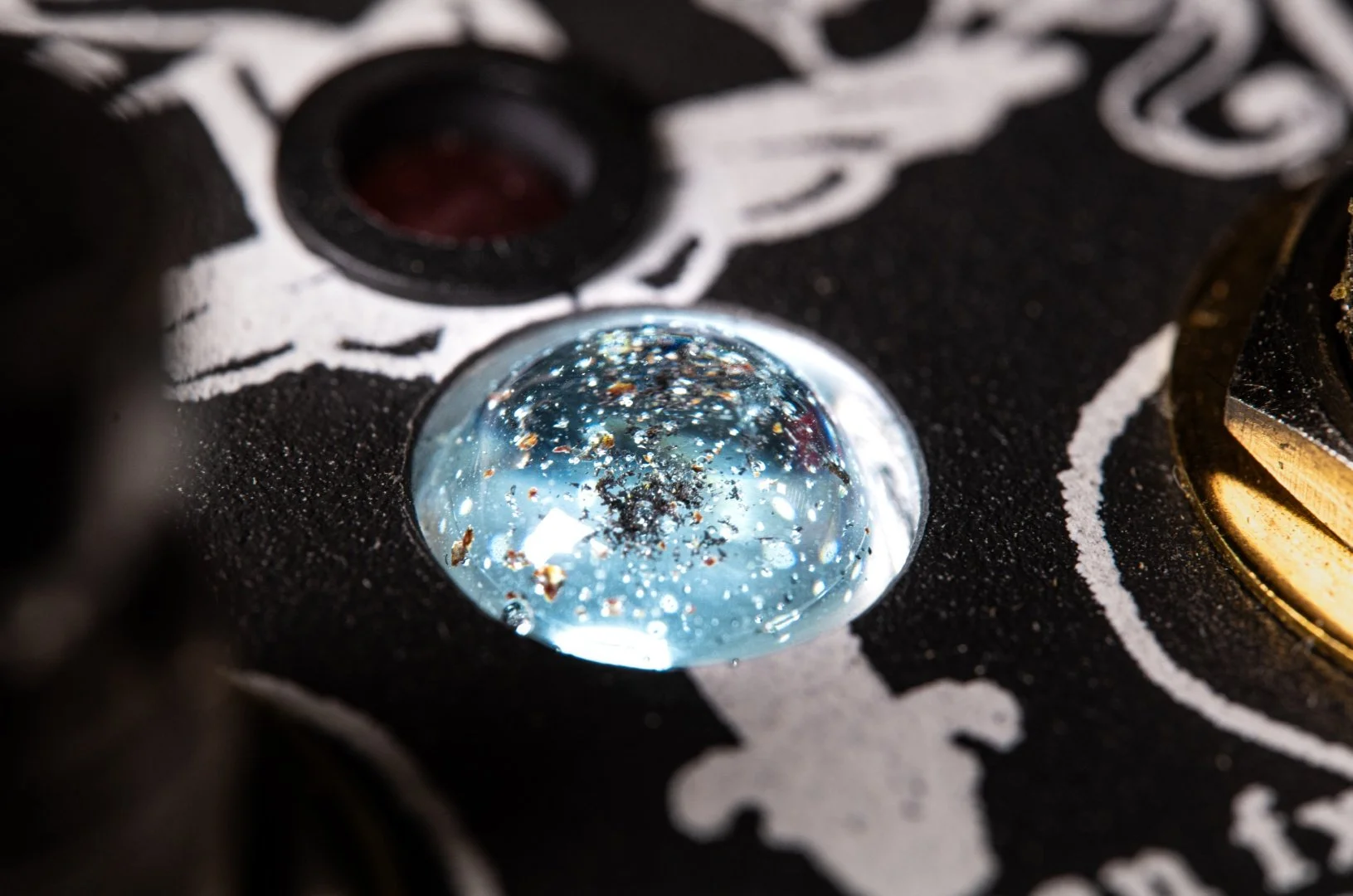
LED Artifacts
-
These artifacts are sourced from reputable sellers that provide authentication as well as information about where & how the item was acquired. Although these artifacts can be extremely expensive in large quantities, we use such small fragments in each LED that they don’t add any significant cost to our pedals. They only add to the existential, visceral, life-changing experience of playing a Hangman fx pedal.
Since these artifacts are indeed rare, & hand-making the lenses is quite a task, they will only be included in the first 50 of each new Hangman fx pedal. This is a “while supplies last” situation, so get em’ while they’re get-able!
Below is the list of materials currently used & the pedals they are used in.

-
Fragments from the blade of an authentic WWII military issue knife (RH-36). Soldiers used their knives for tons of different things like opening food, digging trenches or shaving. Some would also collect enemy knives as souvenirs such as German Luftwaffe gravity knives or Japanese bayonets. It’s possible, not probable, but possible this knife killed a Nazi. It doesn’t get more punk rock than that.

-
Fragments of actual Tyrannosaurus Rex fossilized bone (recovered on private land in South Dakota from the Hell Creek Formation). Existing roughly 65 million years ago, the T-Rex’s name comes from the Greek words tyranno (“tyrant”), saurus (“lizard”) and the Latin word rex (“king”). Without a doubt the king of the prehistoric jungle, the T-Rex’s teeth could reach 9 inches long, and its jaws could devour 500 lbs of meat in one bite. It could comfortably eat you in one bite. One of the most ferocious creatures to ever walk our earth.

-
Fragments of the leaded glass shield radiation-proof window installed in the T Plant (221-T) Plutonium Recovery Building. This was one of the largest Plutonium-extracting plants of the 1940s. As part of the infamous Manhattan Project, this Plutonium was later used in the “Fat Man” atomic bomb that devastated Nagasaki, Japan on August 9th, 1945.

-
Fragments of real meteorite found in the Campo del Cielo crater field in Argentina. If you really want your mind blown, look into the LEDs, and imagine those fragments exploding into our atmosphere over 4,000 years ago. If that doesn’t sufficiently blow your mind, now imagine that those fragments of meteorite were formed roughly 4.5 billion years ago (yes, with a “b”), around the conception of our solar system.

-
Fragments of actual medieval chain mail dating back to the 15th Century, before plated armor became the norm. Chain mail reigned king of defensive armor in Europe for 1,000 years despite its incredibly heavy nature, because it provided protection from sharp blades (but almost no protection against blunt force). Next time you stomp on your Lord GermFet, just imagine the knight or king’s guard who wore these actual pieces of chain mail & the extraordinarily brutal, metal-AF times they lived in.




